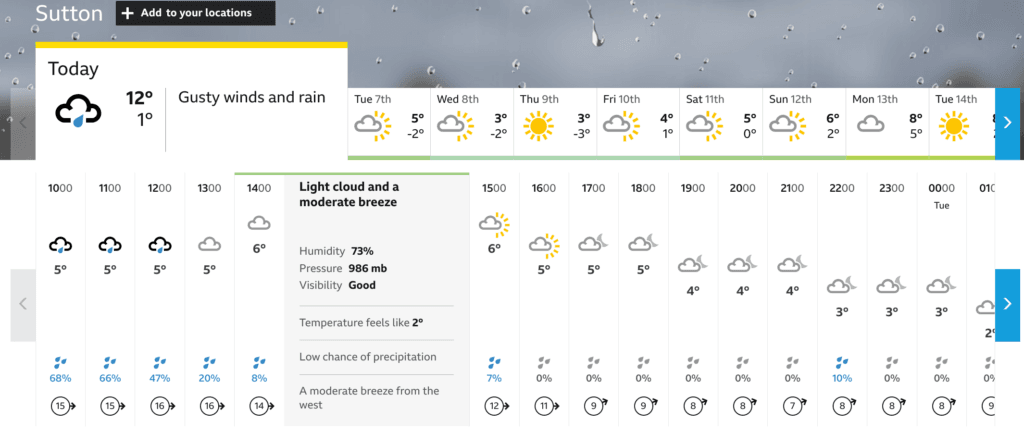It was a rainy morning, and I greeted one of our long term patients in reception. As she stood up, her usual cheerful self dimmed by a slight grimace. As she made her way to the consultation room, she patted her knees and said, “It’s this damp weather—it always makes my arthritis act up.”
It’s not the first time I had heard this issue, especially on days like this. The connection between weather and joint pain is something many people swear by. But is there actual science behind it, or is it just an old wives’ tale?
In this blog, we’ll dig into what might be happening in the body when the weather changes, why arthritis sufferers seem to notice it more, and most importantly, what you can do to feel better no matter the forecast.
What is Arthritis, and What Are Its Different Forms?
Before diving into whether the weather affects arthritis, it’s important to take a step back and understand what arthritis actually is. After all, not all arthritis is the same, and the way it impacts your body can depend on the specific type you have.
Arthritis isn’t a single condition—it’s an umbrella term that covers over 100 different types of joint disorders. While the common thread is joint pain and inflammation, each type has its own unique triggers and symptoms. Knowing which type of arthritis you’re dealing with can help make sense of why your symptoms may change with the seasons or even the day’s weather.
Here are some of the most well-known types of arthritis:
- Osteoarthritis: Often called the “wear and tear” arthritis, this is the most common form. It happens when the cartilage cushioning the ends of bones in a joint wears down over time, leading to pain, stiffness, and inflammation.
- Rheumatoid Arthritis: An autoimmune condition where the immune system mistakenly attacks the lining of the joints, causing swelling, inflammation, and damage over time.
- Gout: Caused by a build-up of urate crystals in the joint, gout leads to sudden, sharp pain—often in the big toe. It’s associated with high levels of uric acid in the blood.
- Psoriatic Arthritis: Linked to psoriasis, this type of arthritis combines joint pain, stiffness, and swelling with skin symptoms.
- Ankylosing Spondylitis: A condition that primarily affects the spine, leading to inflammation of the vertebrae and chronic stiffness or pain.
Osteoarthritis stands out as the most common type, affecting millions of people worldwide. It’s this “wear and tear” form, with its added layer of inflammation, that often gets linked to weather-related symptoms.
(References: Mayo Clinic and NHS)
So What Is It About Bad Weather?

You may have thought like many people with arthritis report that your pain flares up when the weather takes a turn for the worse. But is there any scientific truth to this claim? When looking into this, I found a groundbreaking UK study, aptly named “Cloudy with a Chance of Pain,” which set out to explore this exact question in 2016.
Using data from over 13,000 participants gathered through a smartphone app, researchers found a clear pattern: on damp, windy, and low-pressure days, people were 20% more likely to report increased pain compared to days with average weather conditions. Interestingly, temperature didn’t seem to play as big of a role as you might have expected. However, the study also uncovered something even more intriguing yet unsurprising. Mood emerged as a strong independent indicator of pain in arthritis sufferers. With the days being shorter, darker, and drearier, no wonder we struggle to stay in the greatest of moods.
So, while the weather might not directly “cause” joint pain, it appears to amplify existing discomfort through physical changes in the body. For example, changes in barometric pressure—a measure of atmospheric pressure—can affect the tissues around the joints, potentially leading to swelling or increased sensitivity. Damp and windy conditions may also cause muscles and ligaments to stiffen, which can exacerbate pain in already inflamed joints.
This study sheds light on the complex relationship between our environment, and our bodies. Understanding this connection can help us better manage arthritis symptoms, no matter the forecast.
(Reference: Dixon, W.G., Beukenhorst, A.L., Yimer, B.B. et al. (2019). How the weather affects the pain of citizen scientists using a smartphone app. npj Digit. Med. 2, 105.)
So How Can We Help With Weather-Related Arthritis Pain?
While we can’t change the weather, there are several proactive steps you can take to minimise its impact on the pain of your arthritis. Here are some practical tips to help you stay comfortable, no matter what the forecast brings:
1. Check the Weather and Plan Ahead
Apps and websites like BBC Weather provide detailed information on humidity, pressure, and wind speed. Keeping an eye on these factors can help you anticipate potential flare-ups. For reference:
- Normal pressure: 1009.144–1022.689 mb
- High pressure: Above 1022.689 mb
- Low pressure: Below 1009.144 mb
On low-pressure days or when the forecast predicts damp and windy conditions, plan for extra care, such as allocating time for rest or preparing soothing remedies in advance.

2. Gentle Movement Exercises
Staying active is essential for maintaining joint health. On days when your joints feel stiff, start with gentle, low-impact exercises like stretching, yoga, or even a short walk. These movements can help improve circulation and ease stiffness, making it easier to manage pain.
3. Experiment With Heat or Cold Therapy
Both heat and cold compresses can be effective for soothing arthritis pain, but the right choice depends on what works best for you.
- Heat therapy can relax tight muscles and increase blood flow to the joints.
- Cold therapy can help reduce swelling and numb the area to decrease pain.
Try both approaches and use what provides the most relief for your specific symptoms.
4. Boost Your Mood With Social Interaction
While the physical changes caused by weather can’t be ignored, managing your emotional well-being is also important. We are social beings, and connecting with others can make a big difference. Whether it’s meeting a friend for coffee or calling a loved one, taking time to interact socially can help boost your mood and shift your focus away from discomfort.
By combining these strategies, you can take a more proactive approach to managing arthritis symptoms, no matter the weather.
If You Need Further Help
As we’ve discussed, arthritis comes in many different forms, and the first step to effective management is getting an accurate diagnosis. Identifying the specific type of arthritis you have is crucial because each form responds differently to treatment.
Chiropractors and osteopaths see patients with joint pain every day. While we can provide relief for osteoarthritis-related pain through targeted treatments that improve mobility and reduce discomfort, our role goes beyond that. If we suspect you may be dealing with another form of arthritis, such as rheumatoid arthritis or gout, we will flagpost you to the appropriate care providers, like rheumatologists or your GP for further evaluation and management.
Remember, early diagnosis and the right care can make all the difference in managing arthritis and maintaining your quality of life. Don’t hesitate to seek help—your joints will thank you!
Helpful Resources for Arthritis
If you’re living with arthritis and want to learn more about managing your symptoms or finding support, these trusted websites offer valuable information and guidance:
- NHS Arthritis Page: A comprehensive resource for understanding arthritis, its treatments, and how to access care through the NHS.
- Versus Arthritis: A leading charity providing advice, support, and research for people living with all types of arthritis.
- Arthritis Action: A resource focused on self-management tools, exercise plans, and dietary advice to help reduce arthritis symptoms.
We do not have any affiliation with any of these websites.
About the Author
This blog was written by Luke Fleet, one of our dedicated Chiropractors with multiple years of experience helping individuals achieve their health goals. With a passion for empowering people to live their best lives, Luke combines evidence-based practices and patient-centred care for a personalised approach to care. Learn more at: https://thechilterncentre.co.uk/doctor/luke-fleet-msc/
References
- Arthritis Action. Self-Management Tools and Support for Arthritis. https://www.arthritisaction.org.uk/
- BBC Weather. Weather Information for the UK. https://www.bbc.co.uk/weather/2636503
- Dixon, W.G., Beukenhorst, A.L., Yimer, B.B. et al. (2019). How the weather affects the pain of citizen scientists using a smartphone app. npj Digit. Med. 2, 105. https://doi.org/10.1038/s41746-019-0180-3
- Mayo Clinic. Arthritis: Symptoms & Causes. https://www.mayoclinic.org/diseases-conditions/arthritis/symptoms-causes/syc-20350772#:~:text=in%20different%20ways.-,Osteoarthritis,where%20they%20form%20a%20joint
- NHS. Arthritis: Overview. https://www.nhs.uk/conditions/arthritis/
- Versus Arthritis. Support for People Living with Arthritis. https://www.versusarthritis.org/


